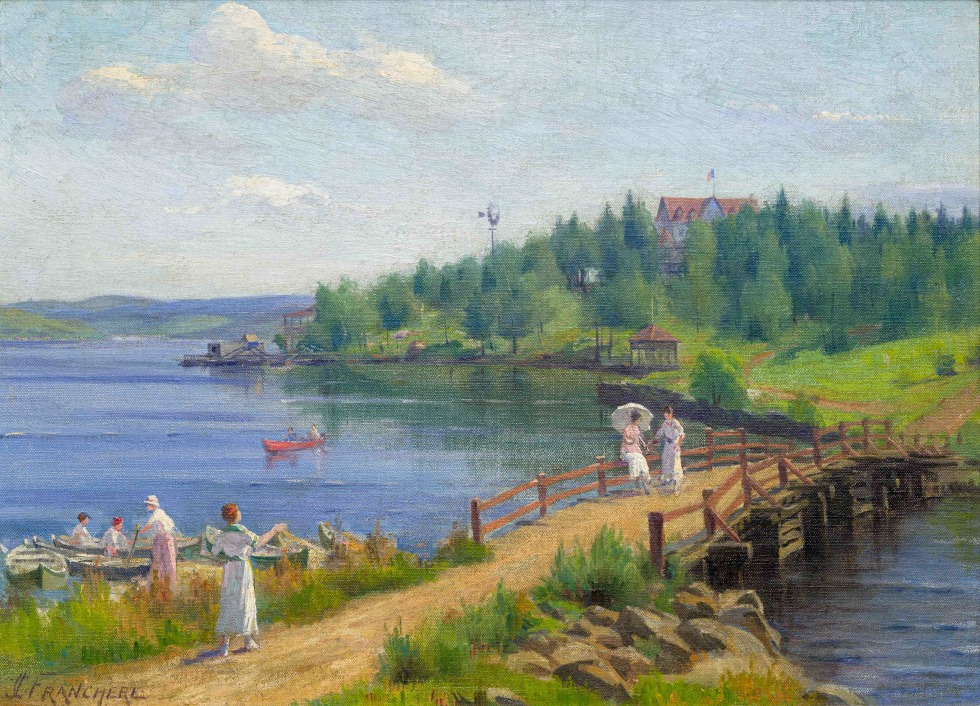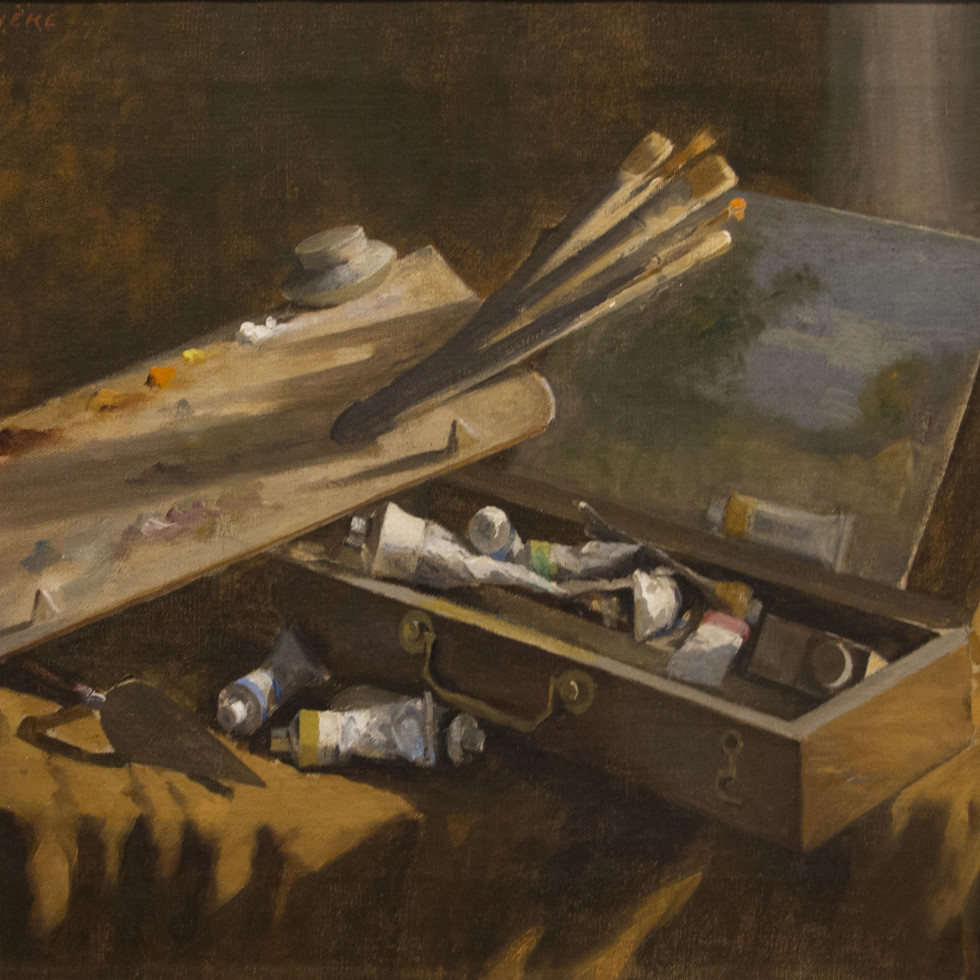Joseph-Charles Franchère
 "Painting from life and by extension through direct observation, Franchère goes beyond his classical, academic French training [...] towards a certain modernity."
Mario Béland, Ph.D.
"Painting from life and by extension through direct observation, Franchère goes beyond his classical, academic French training [...] towards a certain modernity."
Mario Béland, Ph.D.
Born in Montreal on March 4, 1866, Joseph-Charles Franchère is best known for his paintings, illustrations and church murals. Franchère received his education from the Conseil des Arts et Manufactures, run by Abbé Chabert, and from a period spent in the studio of painter-decorator F.X.E. Meloche. In 1888, Franchère went to Paris to complete his training. He spent two years studying art at the Colarossi Studio and at the Académie Julian. He returned to Montreal in 1890 and received a commission to produce three large canvases for the Notre-Dame du Sacré-Coeur chapel. He returned to Paris, task at hand, and painted La Vierge de l'Apocalypse (1892), La Multiplication des pains (1893) and Le Christ consolateur des affligés (1895). During this time, Franchère gained admission to the École des beaux-arts and began submitting his work to the annual exhibitions of the Art Association of Montréal and to the Royal Canadian Academy of Arts. Franchère's work was exhibited as part of the World's Fair in Chicago (1893), in Buffalo (1901) and in St. Louis (1904). Franchère produced murals in churches across Quebec during this time and also taught at the Conseil des Arts et Manufactures and at the Monument-National. He did book illustrations for Paul-Émile Prévost, Chansons canadiennes paroles et musique par nos Canadiens, 1907 and Lionel-Adolphe Groulx, Les Rapaillages, 1916. Having received extensive training in fine art academic traditions, Franchère was able to specialize in subject pictures idealizing country life and in works inspired by symbolism.
Franchère died in Montreal on May 12, 1921.







